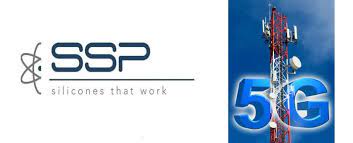Bonded EMI O Rings White Paper and Sample Kit

Specialty Silicone Products (SSP) has published a new white paper about bonded EMI O-rings and is offering a free sample kit so that you can receive examples of these products. SSP’s new white paper is available for immediate download and allows potential buyers to request samples. Click here to download the white paper and, optionally, to get […]
EMI Conductive Silicones with Third-Party Test Data

SSP supplies EMI conductive silicones and puts the third-party test data for these products online. How do you decide which EMI conductive silicones to specify and purchase? If you’re like most engineers, buyers, and product managers, you need to see third-party test data in order to trust a supplier’s products. Price, minimum order quantities (MOQs), and delivery […]
SSP Medical Silicones and REACH Compliance
Specialty Silicones Products (SSP) makes ultra-clean silicones that are used with medical devices and equipment. The base material in our SSP 2390-series elastomers meets USP Class VI requirements for biocompatibility. These platinum-cured silicones also meet FDA CFR 177.2600 requirements and comply with the European Union’s Restriction of Hazardous Substances (RoHS) Directive. Increasingly, however, we’re also asked about […]
EMI RFI Silicones Catalog Available

SSP’s EMI RFI Silicones Catalog is available for download and contains product information for sheets, rolls, and extrusions. Specialty Silicone Products (SSP) is announcing the release of its EMI RFI Silicones Catalog. This downloadable resource is available in PDF format and contains detailed information about all of SSP’s products along with part numbers for sheet […]
Nickel Aluminum EMI Gasket Materials
Compare nickel aluminum EMI gasket materials to silver aluminum silicones and fluorosilicones for EMI shielding. Nickel-aluminum shielding silicones offer greater price stability than silver-filled materials for EMI gaskets. Silver prices increased 45.4% last year and silver investments during the first week of 2021 rose 90% compared to the first seven days of 2020. That’s bad news for […]
MIL-DTL-461 Fluorosilicone Meets EMI Requirements

SSP’s MIL-DTL-461 fluorosilicone meets tough EMI shielding requirements and combines fuel and solvent resistance with low outgassing. Specialty Silicone Products (SSP) is announcing that SSP-2551, a nickel-aluminum fluorosilicone that combines EMI shielding with fuel, solvent, and galvanic corrosion resistance, has been independently tested to 40 GHz and can be used with military electronic products that […]
5G EMI Gaskets for Telecommunications

5G EMI gaskets for telecommunications can use SSP2551, a nickel-aluminum EMI shielding fluorosilicone with strong environmental resistance. 5G telecommunications gaskets need reliable EMI shielding for electronic enclosure seams, power and signal panels, and connector backshells. As 5G networks proliferate, the isolation of sensitive circuits and electronic systems is becoming increasingly important, especially in urban environments. […]
ASTM E595 EMI Silicones are Low Outgassing

SSP makes ASTM E595 EMI silicones that are low outgassing. The ASTM E 595 standard was developed originally by NASA. Specialty Silicone Products (SSP) makes low outgassing silicones and publishes the ASTM E595 test data that we receive from independent laboratories. All third-party test reports are available on SSP’s website so that you can view […]
MIL-DTL-25988 Fluorosilciones with Full COAs and Low MOQs
MIL-DTL-25988 fluorosilciones from SSP are available with certificates of analysis (COA) and low minimum order quantities (MOQs). Specialty Silicone Products (SSP) makes MIL-DTL-25988 fluorosilicones with a full certificate of analysis (COA) for each batch and with no extra testing fees or costs. Plus, SSP supplies these military and aerospace silicones in sheets, rolls, and ready-to-mold compounds with […]
Bonded EMI O-Rings Reduce Costs and Improve Performance

Specialty Silicone Products (SSP) makes bonded EMI O-rings that provide shielding against electromagnetic interference (EMI), electrical conductivity, and environmental sealing. At our manufacturing facility in Ballston Spa, New York (USA), we extrude cords of shielding silicones, cut them to size, and then bond O-rings using a proven process with multiple quality control checkpoints. These products […]
